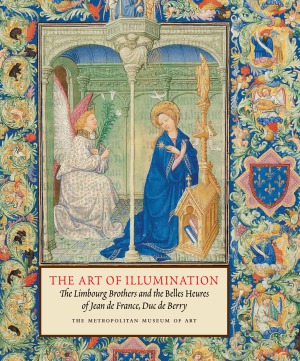

Most ebook files are in PDF format, so you can easily read them using various software such as Foxit Reader or directly on the Google Chrome browser.
Some ebook files are released by publishers in other formats such as .awz, .mobi, .epub, .fb2, etc. You may need to install specific software to read these formats on mobile/PC, such as Calibre.
Please read the tutorial at this link: https://ebookbell.com/faq
We offer FREE conversion to the popular formats you request; however, this may take some time. Therefore, right after payment, please email us, and we will try to provide the service as quickly as possible.
For some exceptional file formats or broken links (if any), please refrain from opening any disputes. Instead, email us first, and we will try to assist within a maximum of 6 hours.
EbookBell Team

5.0
60 reviewsOne of the most lavishly illustrated codices of the Middle Ages, the Belle Heures of Jean de France, duc de Berry (ca. 1405–1408/9), is the only manuscript with miniatures executed entirely by the famed Limbourg brothers. Commissioned by its royal patron, this richly illuminated Book of Hours, intended for private devotion and now housed in The Cloisters, The Metropolitan Museum of Art, belonged to the duke's large collection of prized possessions. The luminous scenes depicting the legends of the saints, the Hours of the Virgin, and the like, many with elaborately designed borders, exemplify the transcendent splendor of the Limbourg brothers' talents.
Jean de France, duc de Berry―the son, brother, and uncle of three successive kings of France―commissioned the Belles Heures as an addition to his luxurious possessions ranging from illuminated manuscripts and goldsmith work, to castles throughout the French countryside. A discriminating patron, Jean de France selected the Limbourg brothers to create this Book of Hours, allowing the young boys (who were in their early teens throughout the duration of the project) a rare latitude for inventively designing the work.
In this volume, the Limbourgs provided the customary components of a Book of Hours, including readings from the Gospels and prayers to the Virgin. The Belles Heures, however, was elevated to unprecedented heights by the addition of seven "picture book" insertions. These pages provided a framework for developing the Limbourg's figural style, refining their palette, experimenting with light and surface values, and devising coherent compositional formulas that focused the dramatic charge of the image. These illuminations, both sacred and secular in subject, range from traditional scenes of Christ's life and ministry to images reflecting the turbulence of the period, such as victims struck by the plague.
Timothy B. Husband's expert scholarship positions the manuscript, its artists, and its patron in context with other objects in the duke's collection and the sources and inspiration of the art. He meticulously charts the components of the codex, its organization and decoration, sequence of production, and the compositional intelligence of the narrative cycles. He places the Belles Heures within the trajectory of fifteenth-century manuscript illumination, delineating the development of the Limbourgs throughout their short careers. A lyrically written central chapter in this volume describes each illumination in the Belles Heures in formal terms and provides selected transcriptions and English translations of the Latin text.
A technical essay by Margaret Lawson offers invaluable insight into the structure of the manuscript and the methods by which it was created. Photomicrographs, taken during Lawson's examination of the pages under high magnification, give the reader unprecedented close-up views of the artists' precision.
All of the illuminations in the manuscript are reproduced in color, many of them the same size as the original.